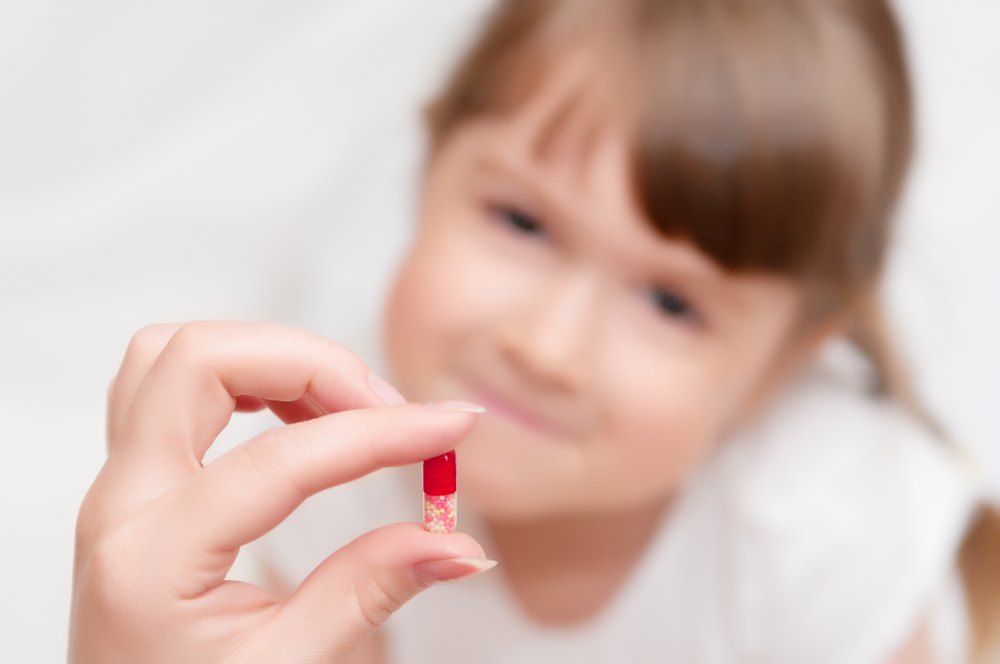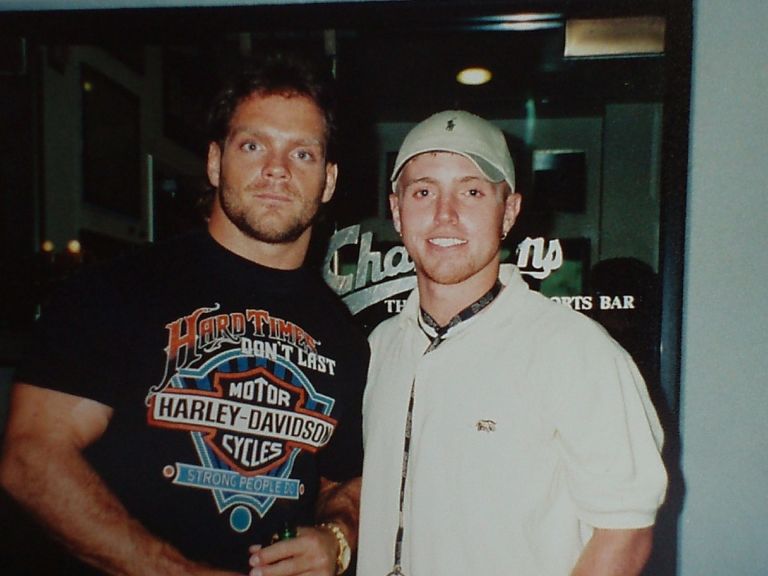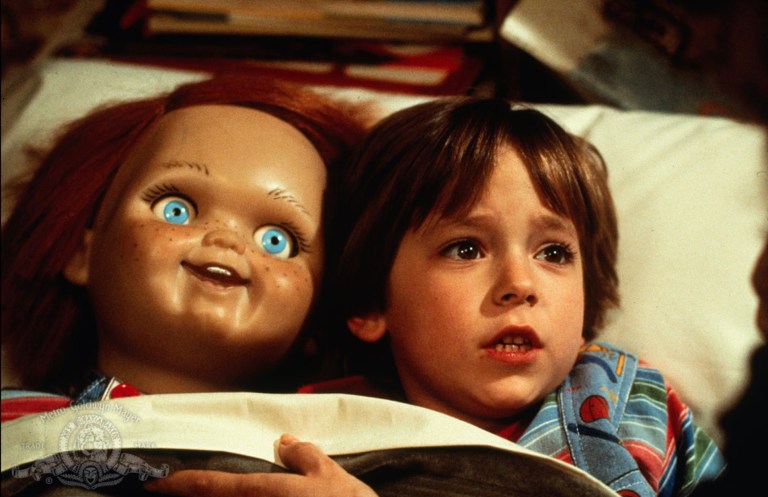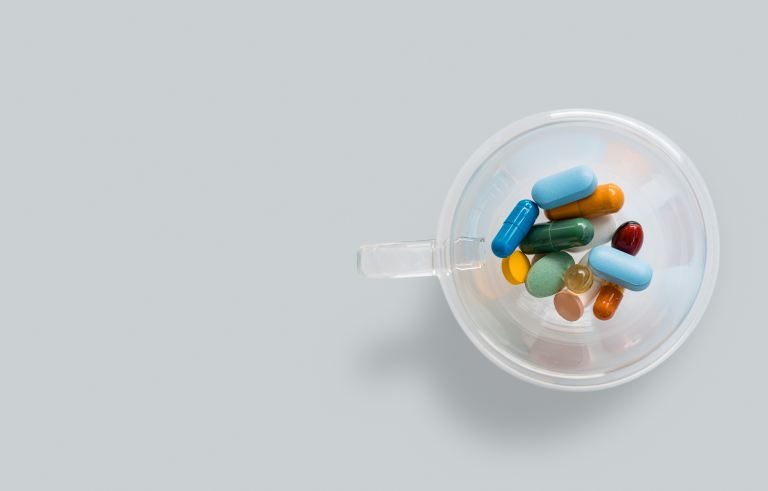Why Are We Overmedicating Our Kids?

I recently stepped inside my old high school for the first time in 10 years for a recent Honors Night ceremony. Watching the kids saunter and amble across the stage with their medallions, placards, and certificates, I got a weird feeling I couldn’t shake.
All of the kids looked suspiciously out of it. Their eyes bulged underneath the auditorium lights, like deer staring down a convoy of Mack Trucks. They didn’t look happy to be receiving their awards. In fact, they looked downright confused, and on more than one occasion, a handler had to physically move them around so everybody could fit on stage. These sure as hell didn’t look like autonomous individuals, or even individuals cognizant of their own surroundings. Something was seriously wrong here.
Then it dawned on me. The emcee for the event wasn’t the principal, or VP, or a coach of any kind. The guy in charge of leading the event—and by proxy, the student honorees—was the school psychiatrist.
Goodness, how things have changed in only a decade. When I was in high school, all we had was a counselor, and he didn’t even ask us about our personal lives. His job, to the best of my recollection, was to merely help students arrange their class schedules and maybe, if he was feeling especially generous, hand out a college pamphlet or two. Today, however, the school counselor means something entirely different—he or she is the state-sanctioned liaison between the student body and pharmaceutical-tossing clinicians.
My senior year, I didn’t know a single classmate on psychiatric medications. Surely, there had to have been a few, but there was still a stigma of sorts attached to it, so if anybody was on Prozac, they definitely didn’t run around flapping their gums about it. Oh, we drank plenty of beer and vodka and smoked a ton of weed and dipped a whole hell of a lot of Skoal, but we drew the line at Xanax and Effexor. Even recreational use of stuff such as Ritalin was frowned upon.
Flash-forward to the present, however, and it’s a completely different story. According to the National Center for Health Statistics, at least 10 percent of US middle-schoolers and high-schoolers in 2012 were on antidepressants or anti-anxiety prescriptions. Perhaps more unnerving, more than a million children in America were found to be on antipsychotic medications alone, with tens of thousands of kids under the age of five routinely being prescribed meds such as Zyprexa.
Look, I’m no Thomas Szasz. I do believe things like severe depression and anxiety exist, and in many cases, psychotropic prescriptions for young people may be warranted. But I also feel that today’s youth are being overmedicated, overprescribed, and overloaded with drugs they don’t need, and in quantities that are irresponsibly high.
Back in the 1970s, everyone thought depression and anxiety were brought about by psychosocial stressors. Well, sometime in the 1980s—coincidentally, around the same time selective serotonin reuptake inhibitors (SSRIs) such as Prozac started becoming fashionable—there was this complete paradigm shift. Now, it wasn’t psychological baggage making you feel sad and antsy, but instead, biochemical misfires…which, fittingly enough, could be remedied by all these SSRIs that were flooding the market.
Growing up, I knew a lot of adults who were on SSRIs. They used to talk about doing them at family get-togethers like they were commenting on chili recipes or something. Twenty years later, every last adult I knew who was sold on the Prozac Solution—every last damn one of ’em—is hopelessly hooked on harder prescriptions, mentally frazzled to the point of incompetence, or dead. Now, that’s not to say that those antidepressants were solely responsible for their less-than-desirable outcomes, but as a constant variable, it’s nonetheless interesting to consider.
Longitudinally, I don’t think anybody knows what these pharmaceuticals do to folks. Considering the sway Big Pharma has on the FDA and physician organizations, however, there’s probably a reason why we haven’t seen that many studies outlining the long-term effects of psychiatric drug use. Call me cynical, but the fact these manufacturers are raking in so much dough makes me question their humanistic motives a smidge.
Sound a bit too conspiratorial for your liking? Well, it’s a little less Alex Jones-sounding when you realize Pfizer was forced to pony up $2.3 billion for marketing Bextra to doctors—with generous kickbacks—for off-label (read: unapproved) purposes in 2009. Or noting that AstraZeneca got slammed with a $500-million fine for trying to bribe doctors to prescribe the psychotropic Seroquel for a whole slew of non-FDA sanctioned ailments in 2010. Or acknowledging GlaxoSmithKline’s $3-billion fine for illegally withholding health hazard information about their drugs in 2012.
These companies are businesses, after all, and something tells me they care more about creating regular customers than helping people out. With that in mind, who could be a better brand loyalist than the kiddos? You start them off early, pump them full of meds—many categorized as benzodiazepine drugs, which have effects staggeringly similar to narcotics—and as they get older, you can sell ’em different drugs that are designed to wean them off the drugs they’ve been on their entire lives. It’s cradle-to-grave marketing at its finest and something the Nanny State is actively encouraging.
For about three years, I covered the US juvenile-justice and youth-services beat. I talked to probably 100 or so kids who were in detention or were in detention at one point, and virtually every one of them told me they were on some kind of psychiatric medication as children. Furthermore, the rate of foster-care youth on psychotropic medication is even higher than in the juvenile system. The Denver Post says that youth in foster services are 12 TIMES LIKELIER to be prescribed psychotropic medications than other youths receiving Medicaid services. Nine out of the ten most commonly prescribed drugs for youth in foster care are heavy-duty psychiatric drugs; comparatively, only one psychotropic drug cracks the top-ten list for non-foster care youths receiving Medicaid.
It gets worse. According to a Rutgers study, three-quarters of youths in the nation who are prescribed psychotropic meds were found to be taking them for non-FDA-approved reasons. Pharmaceutical companies spent about $800 million in 2008 alone to pimp their psychiatric drugs to physicians and healthcare providers may or may not have something to do with that.
Since the nation’s juvenile justice and foster-care youth population make up a paltry percentage of the total number of children in the US, you may be inclined to write off the disturbing data above as something that only affects the extreme and marginalized pockets of America’s under-18 population. Alas, there seems to be an increasingly popular access point for youths to get their psychiatric med hook-up—your local school system.
Today, public schools are GARGANTUAN service points and patient pools for mental-healthcare providers and psychiatrists. For the most part, this can be attributed to the increased prevalence of psychiatrists on school payrolls, who—if not being able to directly prescribe medications for students—can most certainly connect them with psychologists, physicians, and other counselors in the community who can. And while federal law clearly forbids school systems from requiring students to take prescribed medications as a conditional for attending school, most parents remain oblivious. If the school sends their kid to a shrink, and the shrink says that kid meets a loosely defined set of symptoms for the mental disorder du jour, it’s a near guarantee that kid is about to get dispensed a whole shit load of pharmaceuticals. When we talk about greater investments in “mental health services,” that’s all we’re talking about; more damn drugs being doled out, largely on the public’s dime.
If you’re wondering why there’s been such a dramatic increase in the number of kids who have been diagnosed with behavioral and mental health disorders over the last two decades or so, it’s probably because a greater overall percentage of school-aged children are only going through the diagnosis process. And with all of the kickbacks and government subsidies coming into play, is it strange to think that SOME physicians may have financial incentives of their own to diagnose—and then medicate—as many children as they can?
Well, the Journal of Health Economics published a report stating that a good one-fifth of children diagnosed with ADHD in 2010 were almost certainly misdiagnosed with the disorder. This, after Harvard’s Jerome Kagan told Der Spiegel that 90 percent of youths diagnosed with ADHD probably don’t have abnormal dopamine systems—and that, after Leon Eisenberg said that ADHD was a “prime example of a fabricated disease.” By the way, Eisenberg is the man largely credited with “discovering” attention deficit hyperactivity disorder.
Didn’t Eli Lilly spend more than a billion dollars pimping its antipsychotic drugs for “off-label” adolescent use? Didn’t GSK catch a lot of flak for attempting to market Paxil to schoolchildren? Shit, Pfizer actually HIRED more than 200 child psychiatrists to promote adolescent use of the drug Geodone, which the FDA had labeled unfit for children. And then there’s Johnson & Johnson, who got pounded with a $2.2 billion fine for marketing the psychotropic Risperdal to autistic children. They even held “Back to School Bash” campaigns, spreading the gospel of increased childhood prescriptions through ice-cream socials.
All the hubbub we’re hearing about new-wave psychoanalytic tools—things such as Functional Family Therapy and Cognitive Behavioral Therapy—are masking the obvious endpoints of such services: more kids on more pills.
I’ve seen grade-schoolers—we’re talking six- and seven-year-old kids here—drooling out of the side of their mouths. There isn’t a question of if these drugs are harming them, but of how badly they’re harming them. Hormonally and neurodevelopmentally, adolescence is a major transitional period. All of those biochemical and neurological changes already put kids at a major cognitive disadvantage, so why are we surprised when teens and tweens on powerful antidepressants and anxiety meds wind up totally flipping out?
In 2011, the CDC released a report finding that prescription drug use across all ages in the United States had increased 400 percent over the last 20 years. Mental-health services are a major driving force in that astounding uptick, where the chaise lounge has been fully supplanted by the pill dispensary.
We no longer entertain the possibility of contextual, environmental factors playing a role in one’s mental health. Instead of blaming chemical imbalances, is it all that heretical to blame actual psychostressors—such as shitty parents and shitty schools—for teen depression?
I’d say a good 90 percent of teens and kids on psychiatric drugs would be better served by better human interaction than antidepressants. That means connecting them with people who actually talk to them and listen to them without judging them, grading them, or—most importantly—trying to figure out which med would fix them up the most.
That’s the heart of the matter, I guess. It takes time and effort to help kids build pro-social bonds and develop personal coping mechanisms, while it takes only five minutes to pick up a drugstore refill. ![]()





